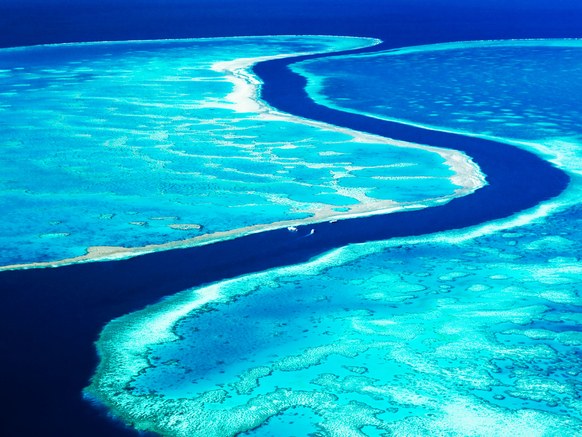Large Sections of Australia�s Great Reef Are Now Dead, Scientists Find

The Great Barrier Reef of Australia has been making news lately with regards to huge sections of a 500-mile stretch in the northern part of the reef having died in the course of 2016 because of high water temperatures, an event being blamed on the effects of global climate change. The Great Barrier Reef is the world's largest coral reef system which is composed of over 2,900 individual reefs and 900 islands stretching for over a vast 1,400-mile area of approximately 133,000 square miles. The Great Barrier Reef is located in the Coral Sea, just off the coast of Queensland, Australia. It is being said that the survival of this beautiful reef system relies on cutting global warming because nothing else will protect the coral from the cycle of mass bleaching events, new research has found. The reef study of three mass bleaching events on the Australian reefs in 1998, 2002 and 2016 found that the coral was damaged by underwater heatwaves regardless of any local improvements to the water quality or fishing controls. The research which was authored by 46 scientists and published in Nature, raises some serious questions about Australia's long-term conservation plan for its famous Barrier Reef.
It is the first mass bleaching to occur on the Great Barrier Reef for a second consecutive year, which suffered its worst ever damage in 2016 when about 22 percent of the coral reef was killed off in a single blow. The recent study, which was unable to take in the effects of the latest event, warned of a fourth mass bleaching event within the next ten to twenty years. This gives the badly damaged northern section of the Great Barrier Reef a slim chance of ever recovering to its former state. The latest bleaching event, which was said to have nothing to do with the warming effect of El Ni�o weather patterns. With rising temperatures that are due to global warming, it is only a matter of time before there is more of these events. Local protection of fish stocks and improved water quality may help when given enough time, and help to improve the prospects for recovery one day. A fourth event after only one year would be a huge blow to the Barrier Reef. Hopefully, this year won't be anything like the past year, which showed that the bleaching that took place in 2016 was off the chart.
Securing a future for the worlds coral reefs, including intensively managed ones like the Great Barrier Reef, will require urgent and rapid action to help reduce global warming. Coral bleaching happens when heat stress forces the corals to expel tiny photosynthetic algae, which in turn leaves them stark white. Prolonged heat stress kills the corals, but the death rates can take at least six months to confirm. The researchers of the reef said that fast-growing coral took between 10 to 15 years to fully recover while longer-lived corals may take several decades. This is a matter that needs to be taken seriously. Taking care of the oceans is important to all of us, not just to the sea life within them, but as part of important ecosystems that effects us all. This kind of sustained absence of another severe bleaching event or other significant disturbance is no longer realistic while global temperatures continue to rise. Hopefully, this is a wake-up call for the world to take action together to try and limit the effects of global warming and move in a direction that will help lessen the damage that is occurring.
This is just one of the trending stories you will see on the wired site. Other topics you will find include celebrity recent news, business, culture, design, gear, science, new celebrity news, security, transportation, celebrity rumors and more. **
Learn MORE at wired
To help with slow website load, we have put all photos for this article here: View photo gallery.







